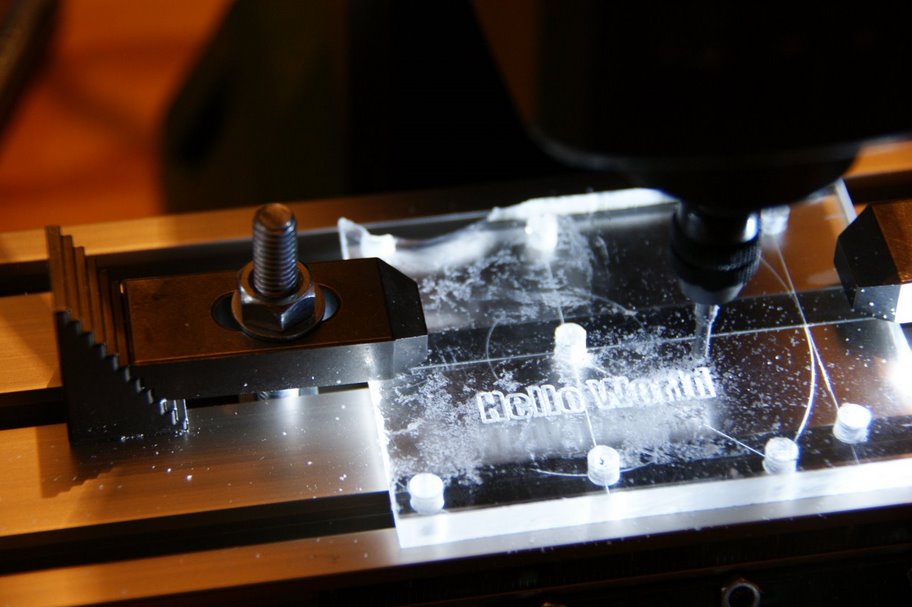|
Google Gadget
Google Gadgets are dynamic web content that can be embedded on a web page. They can be added to and interact strongly with Google's iGoogle personalized home page (discontinued in November 2013, although iGoogle Gadgets still work on other websites) and the Google Desktop (discontinued in September 2011) application, as well as Google Wave (also no longer supported by Google) and Google Sites. Webmasters can add and customize a gadget to their own business or personal web site, a process called "syndication". Gadgets are developed by Google and third-party developers using the Google Gadgets API, using basic web technologies such as XML and JavaScript. Multi-user persistent - Wave Gadgets With the advent of Google Wave (now Apache Wave), gadgets became able to have persistent storage and multi-user capabilities and better state management. Gadgets using Google Wave in this way were simply known as ' Wave Gadgets'. For instance, a game written using a Google Gadget could use Google ... [...More Info...] [...Related Items...] OR: [Wikipedia] [Google] [Baidu] |
IGoogle
iGoogle (formerly Google Personalized Homepage) was a customizable Ajax-based start page or personal web portal launched by Google in May 2005. It was discontinued on November 1, 2013,Google SupportiGoogle's Decommission/ref> because the company believed the need for it had eroded over time. Retrieved on September 28, 2009 , Google had made the service available in many localized versions in 42 languages, and in over 70 country domain-names. In February 2007, 7.1 million people used iGoogle. In April 2008, 20% of all visits to Google's homepage used iGoogle. Features Gadgets iGoogle gadgets interacted with the user and used the Google Gadgets |
Google Desktop
Google Desktop was a computer program with desktop search capabilities, created by Google for Linux, Apple Mac OS X, and Microsoft Windows systems. It allowed text searches of a user's email messages, computer files, music, photos, chats, web pages viewed, and the ability to display "Google Gadgets" on the user's desktop in a sidebar. In September 2011, Google announced it would discontinue a number of its products, including Google Desktop. The reason given was that "In the last few years, there’s been a huge shift from local to cloud-based storage and computing, as well as the integration of search and gadget functionality into most modern operating systems. People now have instant access to their data, whether online or offline. As this was the goal of Google Desktop, the product will be discontinued." Features As of January 2008, Google Desktop featured the following functionality: Sidebar A prominent feature of the Google Desktop is the Sidebar, which holds several com ... [...More Info...] [...Related Items...] OR: [Wikipedia] [Google] [Baidu] |
Apache Wave
Google Wave, later known as Apache Wave, is a discontinued software framework for real-time collaborative online editing. Originally developed by Google and announced on May 28, 2009, it was renamed to ''Apache Wave'' when the project was adopted by the Apache Software Foundation as an incubator project in 2010. Wave was a web-based computing platform and communications protocol designed to merge key features of communications media, such as email, instant messaging, wikis, and social networking. Communications using the system can be synchronous or asynchronous. Software extensions provide contextual spelling and grammar checking, automated language translation and other features. Initially released only to developers, a preview release of Google Wave was extended to 100,000 users in September 2009, each allowed to invite additional users. Google accepted most requests submitted starting November 29, 2009, soon after the September extended release of the technical preview. O ... [...More Info...] [...Related Items...] OR: [Wikipedia] [Google] [Baidu] |
Google Sites
Google Sites is a structured wiki and web page creation tool included as part of the free, web-based Google Docs Editors suite offered by Google. The service includes Google Docs, Google Sheets, Google Slides, Google Drawings, Google Forms, and Google Keep. Google Sites is only available on the web. History Google Sites started out as JotSpot, the name and sole product of a software company that offered enterprise social software. It was targeted mainly at small-sized and medium-sized businesses. The company was founded by Joe Kraus and Graham Spencer, co-founders of Excite. In February 2006, JotSpot was named part of Business 2.0, "Next Net 25", and in May 2006, it was honored as one of InfoWorld's "15 Start-ups to Watch". In October 2006, JotSpot was acquired by Google. Google announced a prolonged data transition of webpages created using Google Page Creator (also known as "Google Pages") to Google Sites servers in 2007. On February 28, 2008, Google Sites was ... [...More Info...] [...Related Items...] OR: [Wikipedia] [Google] [Baidu] |
JavaScript
JavaScript (), often abbreviated as JS, is a programming language and core technology of the World Wide Web, alongside HTML and CSS. Ninety-nine percent of websites use JavaScript on the client side for webpage behavior. Web browsers have a dedicated JavaScript engine that executes the client code. These engines are also utilized in some servers and a variety of apps. The most popular runtime system for non-browser usage is Node.js. JavaScript is a high-level, often just-in-time–compiled language that conforms to the ECMAScript standard. It has dynamic typing, prototype-based object-orientation, and first-class functions. It is multi-paradigm, supporting event-driven, functional, and imperative programming styles. It has application programming interfaces (APIs) for working with text, dates, regular expressions, standard data structures, and the Document Object Model (DOM). The ECMAScript standard does not include any input/output (I/O), such as netwo ... [...More Info...] [...Related Items...] OR: [Wikipedia] [Google] [Baidu] |
Wave Gadgets
In physics, mathematics, engineering, and related fields, a wave is a propagating dynamic disturbance (change from equilibrium) of one or more quantities. ''Periodic waves'' oscillate repeatedly about an equilibrium (resting) value at some frequency. When the entire waveform moves in one direction, it is said to be a travelling wave; by contrast, a pair of superimposed periodic waves traveling in opposite directions makes a ''standing wave''. In a standing wave, the amplitude of vibration has nulls at some positions where the wave amplitude appears smaller or even zero. There are two types of waves that are most commonly studied in classical physics: mechanical waves and electromagnetic waves. In a mechanical wave, stress and strain fields oscillate about a mechanical equilibrium. A mechanical wave is a local deformation (strain) in some physical medium that propagates from particle to particle by creating local stresses that cause strain in neighboring particles too. For exa ... [...More Info...] [...Related Items...] OR: [Wikipedia] [Google] [Baidu] |
HTML
Hypertext Markup Language (HTML) is the standard markup language for documents designed to be displayed in a web browser. It defines the content and structure of web content. It is often assisted by technologies such as Cascading Style Sheets (CSS) and scripting languages such as JavaScript, a programming language. Web browsers receive HTML documents from a web server or from local storage and browser engine, render the documents into multimedia web pages. HTML describes the structure of a web page Semantic Web, semantically and originally included cues for its appearance. HTML elements are the building blocks of HTML pages. With HTML constructs, HTML element#Images and objects, images and other objects such as Fieldset, interactive forms may be embedded into the rendered page. HTML provides a means to create structured documents by denoting structural semantics for text such as headings, paragraphs, lists, Hyperlink, links, quotes, and other items. HTML elements are delineated ... [...More Info...] [...Related Items...] OR: [Wikipedia] [Google] [Baidu] |
"Hello, World!" Program
A "Hello, World!" program is usually a simple computer program that emits (or displays) to the screen (often the Console application, console) a message similar to "Hello, World!". A small piece of code in most general-purpose programming languages, this program is used to illustrate a language's basic Syntax (programming languages), syntax. Such a program is often the first written by a student of a new programming language, but it can also be used as a sanity check to ensure that the computer software intended to Compiler, compile or run source code is correctly installed, and that its operator understands how to use it. History While several small test programs have existed since the development of programmable computers, the tradition of using the phrase "Hello, World!" as a test message was influenced by an example program in the 1978 book ''The C Programming Language'', with likely earlier use in BCPL. The example program from the book prints , and was inherited from a 197 ... [...More Info...] [...Related Items...] OR: [Wikipedia] [Google] [Baidu] |
Google Services
The following is a list of products, services, and apps provided by Google. Active, soon-to-be discontinued, and discontinued products, services, tools, hardware, and other applications are broken out into designated sections. Web-based products Developer tools Operating systems Desktop applications Other Mobile applications Hardware Product families * Google Pixel – smartphones, tablets, laptops, earbuds, and other accessories. * Google Nest – smart home products including smart speakers, smart displays, digital media players, smart doorbells, smart thermostats, smoke detectors, and wireless routers. * Fitbit – activity trackers. * Stadia Controller – game controller for Stadia. Devices Processors Services Scheduled to be discontinued Applications that are no longer in development and scheduled to be discontinued in the future: 2025 * Google URL Shortener – URL shortening service. Started to turn down support on M ... [...More Info...] [...Related Items...] OR: [Wikipedia] [Google] [Baidu] |
Web Applications
A web application (or web app) is application software that is created with web technologies and runs via a web browser. Web applications emerged during the late 1990s and allowed for the server to dynamically build a response to the request, in contrast to static web pages. Web applications are commonly distributed via a web server. There are several different tier systems that web applications use to communicate between the web browsers, the client interface, and server data. Each system has its own uses as they function in different ways. However, there are many security risks that developers must be aware of during development; proper measures to protect user data are vital. Web applications are often constructed with the use of a web application framework. Single-page applications (SPAs) and progressive web apps (PWAs) are two architectural approaches to creating web applications that provide a user experience similar to native apps, including features such as smoot ... [...More Info...] [...Related Items...] OR: [Wikipedia] [Google] [Baidu] |




